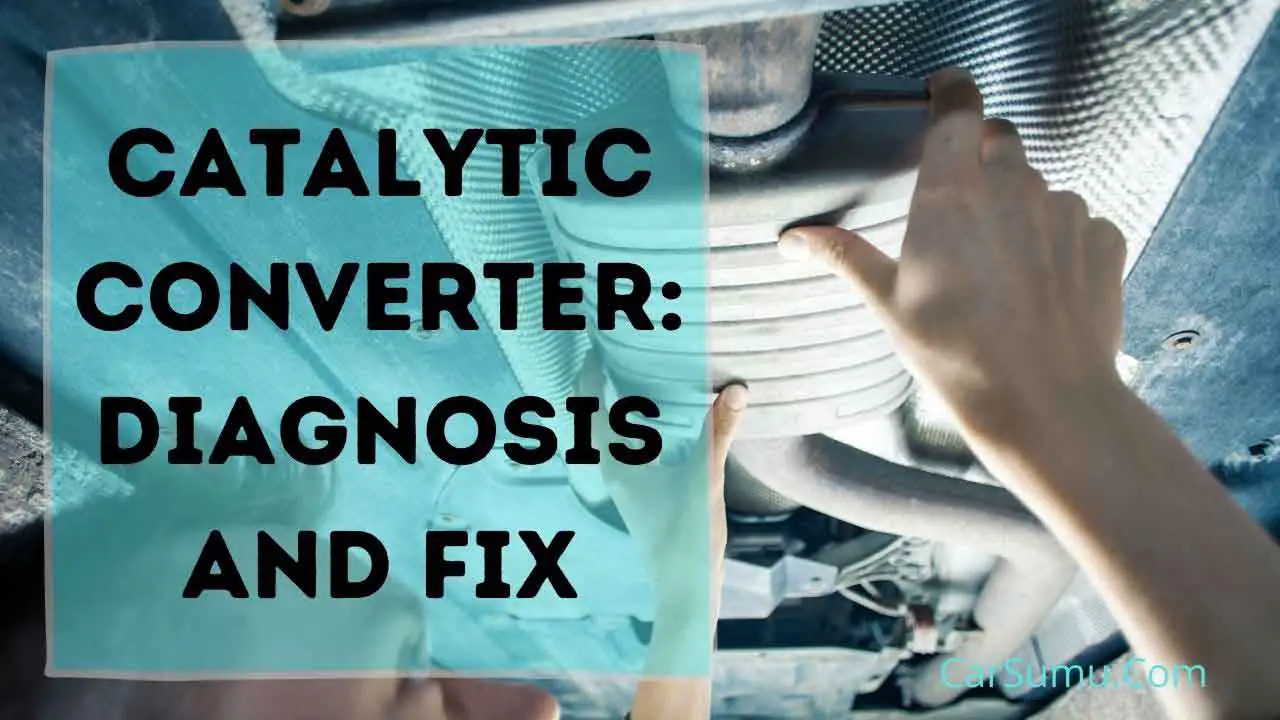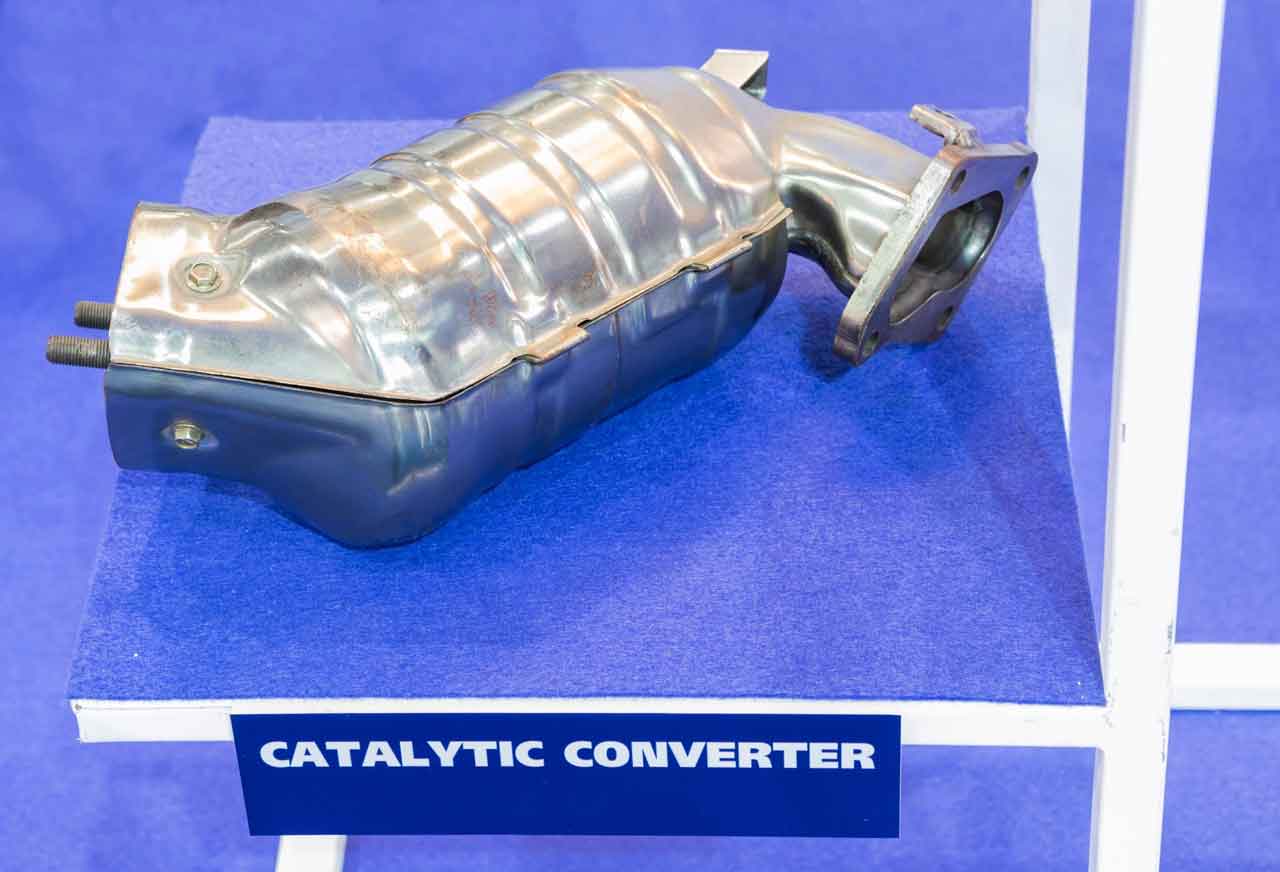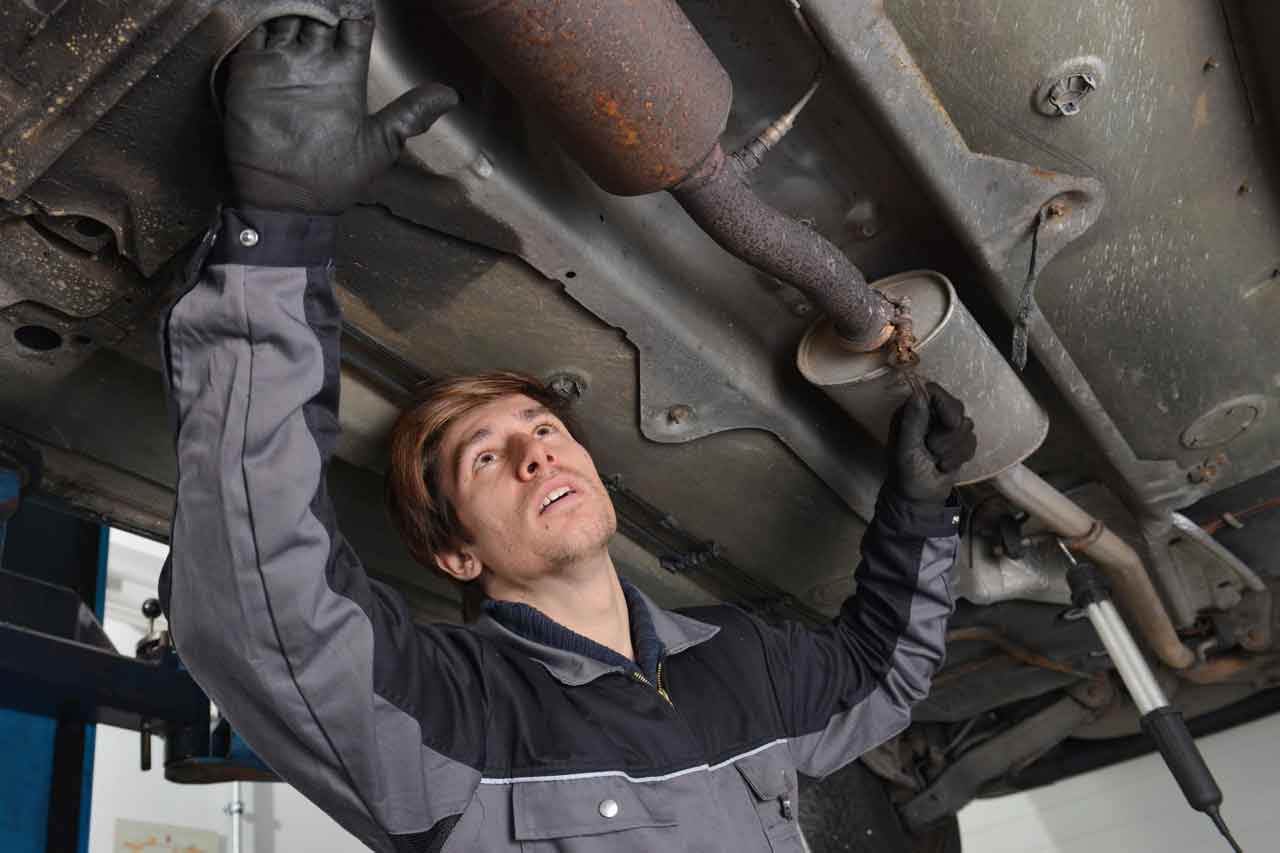A bad catalytic converter can significantly affect your engine performance.

While using the converter is mandatory, it causes some serious issues in the vehicle when malfunctions.
So, we have talked about some key steps to follow for keeping the catalytic converter in good condition, diagnosing a bad one, and many more! Stay with us!
This article covers topics like symptoms of a bad catalytic converter, how can you diagnose a problem relating to it, what happens if you leave a faulty converter in your vehicle without replacing it.
Interesting Facts About Catalytic Converter
- Catalytic Converter Transforms toxic gas to safe gas.
- Generally, a Catalytic converter won’t go bad without any other problem in your vehicle.
- Federal Catalytic converter warranty is 8 years or 80,000 miles.
- Catalytic converters contain some precious metals that can be extracted through a complicated process.
- In the USA, around 4,000 catalytic converters are stolen from functional vehicles each year.
What is a Catalytic Converter?
A honeycomb-like ceramic housing that purifies the exhaust and transforms the harmful carbon monoxide, nitrogen oxide, and hydrocarbons into nitrogen, carbon dioxide, and water vapors to keep the environment clean.

The catalytic converter is a two-chamber honeycomb-shaped ceramic material. The chambers consist of a little amount of platinum, palladium, and rhodium.
These precious metals react with harmful gases and break down into less harmful substances like carbon dioxide, nitrogen, and water vapors to protect the environment from being toxic.
People like to call it a ‘cat’.
Where the Catalytic Converter is Located?
The catalytic converter is located in the middle of your exhaust pipe between the engine manifold and the muffler.
When you drive the vehicle, some unburnt fuel or hydrocarbon is discharged from the combustion through the exhaust, incomplete combustion creates toxic carbon monoxide, also oxygen with nitrogen at high temperature in the combustion chamber creates nitrogen oxide. All these gases are harmful to both human health and the environment.
To purify these toxic materials and keep the environment healthy to breathe, catalytic converters are placed between the exhaust manifold and the muffler (aka silencer).
How Long Catalytic Converter Last?
Catalytic converters last 15 years or 150,000 miles on average. However, you may experience lower or higher durability with your cat because of other correlated things.
A perfectly functional car without any problem won’t make the cat bad unless you damage it physically. As there are no mechanical moving parts or similar things in the converter, it remains in good shape unless corroborated with some other problems in your vehicle.
What are the Symptoms of a Bad Catalytic Converter?
Catalytic converters can go bad because of getting old, contaminated exhaust, or physical damage to the converter due to driving on rough terrain, etc.
A bad catalytic converter can generate multiple types of symptoms, some of which can lead you to a costly repair. The most common symptoms of the bad catalytic converter are-
1. Check Engine Light
If you have a clogged catalytic converter or have any other catalytic issue, this may cause your check engine light to turn on.
It is the easiest way to get notified about a bad catalytic converter as you can connect an OBD 2 scanner and pull the trouble code and see the problem that is causing the engine malfunction light. An inefficient catalytic converter returns the trouble P0420.
2. Vehicle Won’t Accelerate
One of the most common symptoms of a bad catalytic converter is difficulty accelerating. If you see your vehicle is not accelerating after achieving 40 miles or 50 miles per hour, this is a clue about the bad catalytic converter.
This happens due to the trapped exhaust air that keeps the system hotter than normal. To compensate for the issue in cooling, your vehicle computer system restricts the acceleration up to a limit to prevent damage.
3. Unusually Excessive Heat Under the Vehicle
As we have discussed in the above sub-head, clogged air trapped between the exhaust manifold and the cat causes overheating in the system. If you stand still close to the door of your vehicle when the engine is running, you should feel the heat coming from the exhaust pipe.
4. Dark or Gray Exhaust
While dark exhaust emission is an indication of a clogged fuel injector or air filter, this can happen because of a bad catalytic converter too.
This happens mainly because of engine coolant leaks to the combustion system and harming the internal metals of the catalytic converter.

5. Unusual Smell From Exhaust
If the exhaust from your vehicle smell like rotten eggs, your catalytic converter may have been broken inside.
This smell comes out of hydrogen sulfide which is caused for basically either of two reasons, i.e. a bad catalytic converter, or a bad fuel pressure regulator.
6. Rattling Noise Under the Vehicle
Another common cause of a damaged catalytic converter is rattling noise from the exhaust. This sound comes because of the broken pieces of catalytic converters rubbing against the exhaust metal chamber.
How to Diagnose Catalytic Converter Problems?
There are hundreds of ways by which you can diagnose problems relating to the cat. However, we are sharing with you only the easy steps. That we feel most people would be happy to do without consulting any mechanic. So, let’s get started-
1. Age of the Catalytic Converter
Generally, catalytic converters last around 10 to 20 years without any problem. If your catalytic converter is newer than the range mentioned, this may not be the cause of the symptoms.
2. Exhaust Leak
Check each joint of your exhaust for any leak or crack. An easy way to check this is by taking a bottle of soapy water, starting the engine, and spraying on the exhaust to see if any bubbles are forming on the exhaust.
If you see bubbles forming, that’s because of leaks in the system. If you don’t see any bubbles forming on the exhaust pipe or around the catalytic converter or the muffler, move to the next step.
3. Check Entire Cooling System
Leaking coolant into the combustion chamber or other engine parts can damage key engine parts as well as the cat. So, inspect the entire cooling system for any leaks or issues. If you find any, fix them and check if the problem is solved or not.

4. Is there any problem with the Engine
The next thing to check is the engine of your vehicle. Check the system from the intake manifold to the exhaust manifold.
A clogged fuel pressure gauge or a fuel injector can cause a malfunction in the engine as well as the catalytic converter.
5. Is There Any Problem in Muffler
One thing that most people ignore when diagnosing the catalytic converter is the muffler. Your cat may have no issue at all but because of a clogged muffler, you may have been experiencing symptoms that we have discussed above.
6. The temperature of the Catalytic Converter
Checking the temperature of the inner part and outer part of the cat can also give you a good indication of the condition inside the catalytic converter.
A perfectly working cat should have a hot inner part with a comparatively colder outer chamber.
If your infrared thermometer gives the temperature of the whole catalytic converter almost the same, the cat is damaged and needs a replacement.
7. Check Pressure
Checking pressure between the exhaust manifold and the cat can give you a ton of data about the catalytic converter’s health. You need to make a hole in the exhaust pipe and put a pressure gauge there to see if the pressure is more than 1.5 PSI.
A clogged-up cat won’t let the air go out easily making the exhaust pipe between the engine and the cat highly pressurized. Anything over 2 PSI is a clear indication that you have either a clogged converter or a clogged muffler.
Because the normal exhaust flow is restricted, the exhaust pipe and the whole emissions system will heat up and start malfunctioning.
So, you can follow the step to make a small hole between the cat and the muffler and measure the air pressure of that spot for more precise inspection. If the pressure is not close to the pressure you got earlier, the cat is bad.
If the pressure is the same or close to the earlier reading, your catalytic converter is good but the muffler is clogged up.
8. Use a Gas Analyzer to Check Emissions
If you have a gas analyzer, check the emissions of your vehicle. Any of the three harmful exhaust gasses shouldn’t come out of your vehicle if the catalytic converter is functioning.
The toxic gases to look out for are hydrocarbons, nitrogen oxide, and carbon monoxide.
What to Do if my Catalytic Converter is Bad?
The first thing to check is the age of the catalytic converter. If your vehicle is comparatively new, has less than 80000 miles in it, or less than 8 years (whichever comes first), you are covered by a federal catalytic converter warranty.
You can get a free cat for free without spending on this.
However, the federal warranty covers other emission control parts as well for 2 years or 20,000 miles.
If your car is older or has more than 80000 miles, you need to replace or repair the failed catalytic converter.

How to Replace a Catalytic Converter?
Replacing a catalytic converter is an easy task when you have some common hand tools. Cats are generally installed with bolts and the replacement process only requires you to purchase a new catalyst, remove the old one from the exhaust, and install the new converter.
However, if your vehicle has a welded converter, then you need to cut loose the old one from the exhaust and weld the new one to the exhaust pipe.
What happens I Don’t Replace My Catalytic Converter?
Catalytic converters prevent harmful emissions. If you have a bad catalytic converter, your vehicle won’t pass the emissions test due to the presence of toxic pollutants.
Apart from these issues, you will experience reduced acceleration, lower fuel economy, dark exhaust smoke, reduced engine performance, etc.
Engine failure is the worst that can happen due to catalytic converter failure. This can happen because of the backpressure build-up on the engine due to a clogged up catalytic converter.
How Long Can You Drive with a Bad Catalytic Converter?
Removing a bad catalytic converter from the exhaust pipe will keep your vehicle functioning normally if any other problem does not arise in the meantime.
However, driving with a clogged catalytic converter can result in poor acceleration, engine problems, engine components failure, reduced vehicle performance, and Importantly, will reduce engine power.
Before these symptoms start appearing and damage the vehicle, you may get around 50 miles of a free ride. However, we don’t recommend driving with a failed cat. If symptoms appear outside of your house, slow down your vehicle and reach your home ASAP.
Can You Repair a Catalytic Converter?
No, bad or damaged catalytic converters are not repairable. Because there are no electrical components or any machinery at all, you can’t even attempt to repair the converter.
However, if the problem is only a clogged-up catalytic converter. Then you can try to unclog the pores with a thinner, detergent, and pressure washer combination.
How to Fix Catalytic Converter Without Replacing?
A catalytic converter is a combination of two chunks of honeycomb-shaped ceramic. Failed catalytic converters with physical damage are irreparable.
However, you can unclog a clogged cat by removing it from the chamber and soaking it into detergent mixed water overnight. Here is the process to follow-
1. Remove the catalytic converter from the exhaust pipe by unbolting it with a wrench. You may need to spray a degreaser on the bolt to make things easy to remove.
2. Prepare a bucket full of water. Pour powerful detergents in it and mix perfectly so that they dissolve into the water.
3. Soak the cat in the bucket and leave it there for at least 12 hours. Allow the cat to absorb the detergents into it.
4. Contaminants should start breaking down within 4 hours and can take up to 24 hours to be clear fully. After the contaminants break down, use a pressure washer to eliminate the particles from the converter.
However, this process won’t work in case you have a broken cat or the catalytic is too contaminated that the composites are not breaking down.
But repairing a catalytic converter is worth a try because of the money you need to spend on a new catalytic converter replacement.
How to Keep a Catalytic Converter in Good Shape
Here are some key steps to follow for keeping your ceramic catalyst in good shape for an extended period-
1. Bad fuel burns badly, causing emissions of harmful substances. For protecting the converter, make sure to use the right kind of fuel the manufacturer recommends you to use.
2. The catalytic converter is brittle. So, be cautious when driving on bumpy roads, speed breakers, etc. Drive carefully so that the catalytic converter does not get physically damaged by contact with heavy road elements.
3. Misfire in the engine causes unburnt fuel to reach the exhaust. But the catalytic converter prevents the unburnt fuel from escaping and sometimes, the fuel can burn inside the catalyst ceramic due to the heat and damage the internals.
4. As you already know that the catalytic converters heat up pretty well. Getting in touch with water abruptly can cause the internals to cool down suddenly resulting in a cracked catalyst. So, avoid puddles and roads that mimic a similar situation.
5. Inspect the exhaust components regularly and see if any problems appear or not. Finding a malfunction in the exhaust or engine before damaging the catalytic converter will save you from spending hundreds on a new converter.